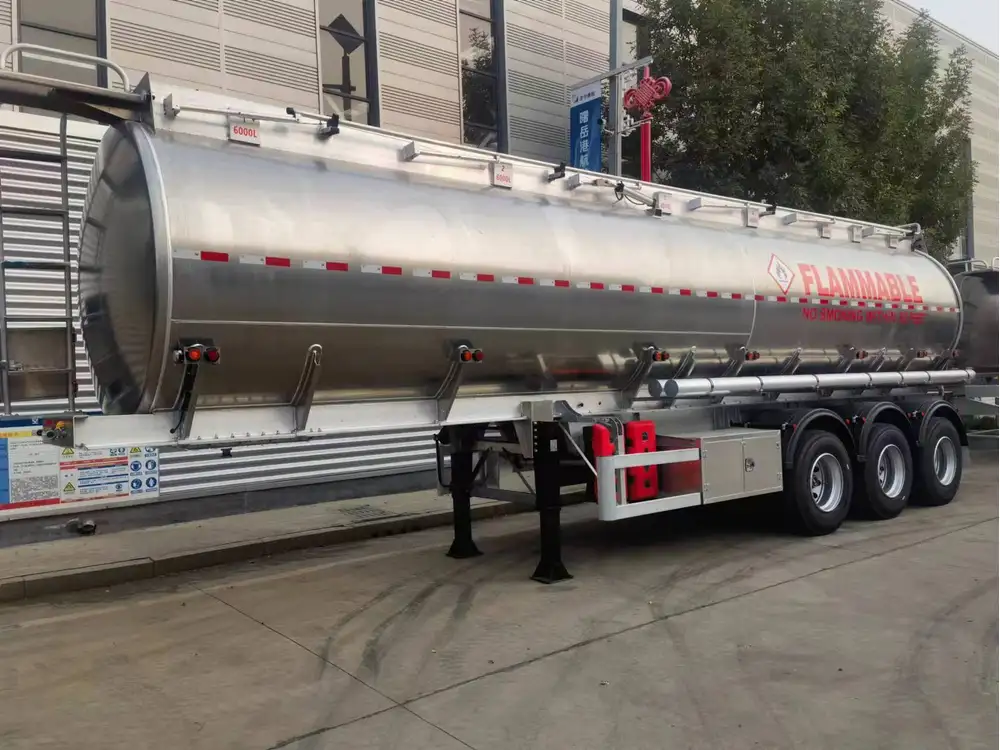Understanding the oil capacity of semi-trucks is crucial for fleet managers, truck drivers, and anyone involved in transportation logistics. Oil is the lifeblood of a semi-truck, ensuring that its engine operates smoothly, maintains optimal performance, and minimizes wear over time. In this article, we will delve into the specifics of semi-truck oil capacities, various factors affecting these capacities, and essential maintenance tips to ensure your vehicle runs efficiently.
Key Factors Influencing Oil Capacity in Semi Trucks
Engine Type and Model Variation
The amount of oil a semi-truck holds significantly depends on its engine type and model. Common engine types found in semi-trucks include:
- Diesel Engines: These engines are typically more complex and larger, requiring more oil for operation. Most diesel semi-trucks hold between 10 to 15 quarts of oil, although larger engines can hold up to 30 quarts or more.
- Gasoline Engines: Less common in heavy-duty trucks but still relevant to lighter models, these engines generally hold less oil, usually between 5 to 8 quarts.
Comparison of Popular Semi-Truck Models:
| Truck Model | Engine Type | Oil Capacity (Quarts) |
|---|---|---|
| Freightliner Cascadia | Diesel | 12-15 |
| Kenworth W900 | Diesel | 18-24 |
| Peterbilt 579 | Diesel | 12-15 |
| Volvo VNL | Diesel | 12-14 |
| Mack Anthem | Diesel | 12-20 |

Age and Condition of the Engine
Older engines may have varying capacities due to wear and tear over time. For example, engines that have undergone significant maintenance or part replacements might exhibit slightly different oil capacities due to design alterations or the installation of aftermarket components.
Filter and Oil Type
The oil filter plays a vital role in the oil system. Using a larger oil filter can increase the overall oil capacity of the system. Furthermore, the type of oil—conventional, synthetic blend, or full synthetic—can also affect the required oil volume. Synthetic oils often allow for longer intervals between oil changes, meaning that proper monitoring of the oil levels is essential.
Typical Oil Capacity Range
To provide a clearer understanding, let’s break down the typical oil capacities based on truck class:

Class 7 (Heavy-Duty Trucks)
- Oil Capacity: Approximately 10 to 18 quarts.
- Example Models: Freightliner Cascadia, Volvo VNL.
Class 8 (Super Heavy-Duty Trucks)
- Oil Capacity: Ranges between 18 to 30 quarts, depending on the engine variant.
- Example Models: Kenworth W900, Peterbilt 579.
Quick Reference Table: Estimated Oil Capacities
| Truck Class | Engine Types | Oil Capacity Range (Quarts) |
|---|---|---|
| Class 7 | Diesel | 10 – 18 |
| Class 8 | Diesel | 18 – 30 |
| Light-Duty Trucks | Gasoline | 5 – 8 |

Importance of Correct Oil Levels
Maintaining the correct oil level in a semi-truck is indispensable for the following reasons:
1. Engine Lubrication
Proper oil levels ensure that engine internals are adequately lubricated, reducing friction while enhancing performance, thus prolonging engine life.
2. Heat Dissipation
Oil helps dissipate heat generated during the combustion process. Insufficient oil can lead to overheating, resulting in severe engine damage.

3. Contaminant Removal
Oil not only lubricates but also helps remove harmful particles from the engine. Regular oil changes and monitoring help keep the engine clean.
4. Fuel Efficiency
An adequately lubricated engine operates more efficiently, which translates to improved fuel economy—a crucial consideration for trucking companies.
Oil Change Recommendations
Regular maintenance checks and oil changes are critical for optimal engine performance. Here is a guideline to help manage oil changes effectively.

1. Type of Oil Used
Full synthetic oils, while more expensive, can extend the intervals between oil changes significantly—as much as 15,000 miles or more—compared to 5,000 to 7,500 miles for conventional oils.
2. Driving Conditions
Regularly inspect oil levels if driving in arduous conditions such as extreme temperatures, heavy loads, or frequent stop-and-go traffic. The oil may degrade quicker under such stresses.
3. Engine Hours
Monitoring engine hours is vital, particularly in high-use scenarios. Consider changing oil after reaching a certain number of engine hours, even if the mileage hasn’t reached the threshold.
| Type of Oil | Change Interval (Miles) | Change Interval (Hours) |
|---|---|---|
| Conventional Oil | 5,000 – 7,500 | 100 – 150 |
| Synthetic Blend | 7,500 – 10,000 | 200 – 300 |
| Full Synthetic | 10,000 – 15,000 | 300 – 400 |

Common Oil-Related Issues in Semi Trucks
Overfilling Oil
Overfilling can lead to high oil pressure, which may damage engine seals and lead to oil leaks. It can also cause the crankshaft to churn oil excessively, leading to aeration (bubbles), thereby reducing lubrication effectiveness.
Low Oil Levels
Conversely, running on low oil can result in catastrophic engine failures. Low oil jeopardizes lubrication, leading to increased friction, overheating, and eventually severe engine wear or damage.

Oil Leaks
Diagnosing and resolving oil leaks promptly helps avoid significant engine repairs. Regularly checking for oil spots where the truck is parked can be a good practice for maintaining oil levels.
Conclusion
The oil capacity of a semi-truck is a pivotal parameter that significantly influences engine performance, longevity, and efficiency. With capacities ranging from 10 to 30 quarts depending on the engine type and model, understanding the variables that affect oil levels ensures optimal maintenance and operation.
Employing best practices for oil changes, closely monitoring oil levels, and addressing common issues will enhance not only the lifespan of the truck’s engine but also ensure that it operates at peak efficiency. By adhering to these guidelines, fleet managers and drivers can navigate the complexities of semi-truck maintenance with confidence, knowing they are contributing to the overall efficiency and reliability of their transportation operations.



